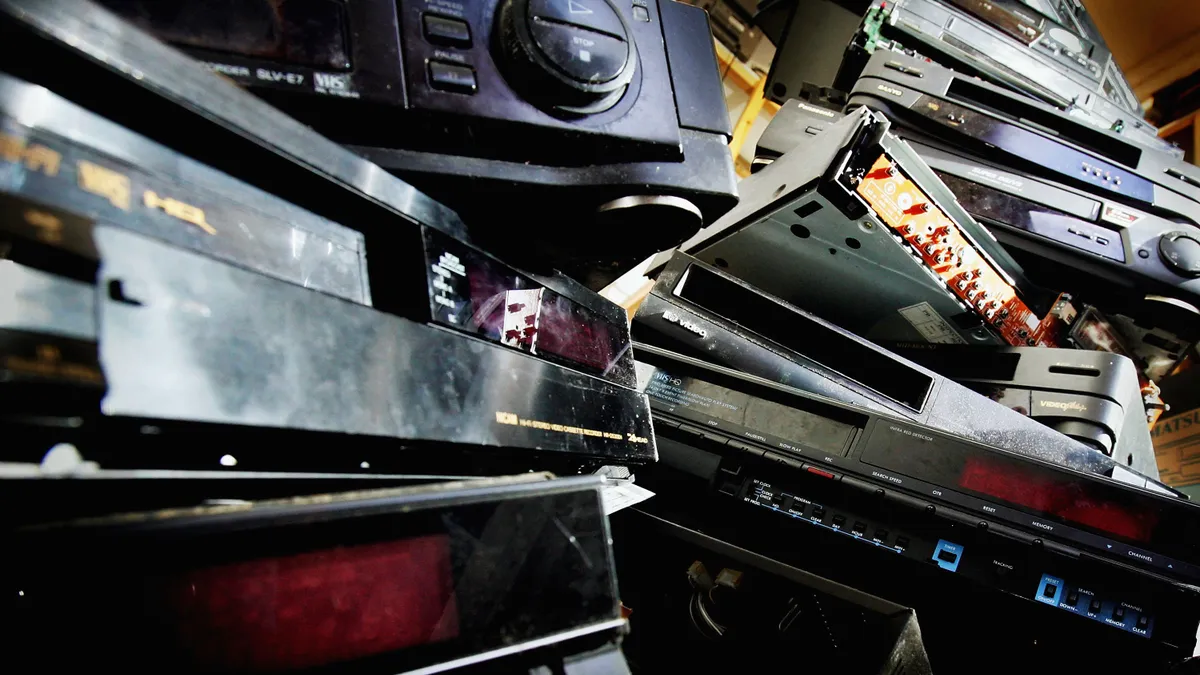Dive Brief:
- The U.S. Department of Energy recently launched the Electronics Scrap Recycling Advancement Prize, which will award a total of up to $4 million over three phases for innovations that “substantially increase” the recovery and reuse of valuable materials from e-scrap.
- The E-SCRAP competition aims to fund innovations that can reduce the costs and environmental impact of recovering critical materials from e-scrap. It’s part of the DOE’s ongoing efforts to bolster the domestic supply chain for such materials while putting a dent in the growing global electronic waste stream, the agency said.
- For the first phase, the DOE will choose up to 10 winning projects to each receive a $50,000 cash award, as well as $30,000 in national laboratory analysis support. For-profit and nonprofit entities can apply, as well as non-federal government entities such as states, counties, municipalities, tribes, academic institutions and individuals.
Dive Insight:
Electronics recycling has become more of a federal focus in recent years as agencies announce targeted investments in recycling innovations. The new E-SCRAP prize is among the DOE’s ongoing efforts to bolster domestic supply chains for critical materials. It sees it as an economic and manufacturing priority because some countries currently corner the market on certain minerals commonly used in electronics production.
While recycled materials are critical to building items such as wind turbines and electric vehicle batteries, e-scrap recovery faces roadblocks, “including a fragmented recycling value chain, a complex and dynamic feedstock, and a rapidly evolving end-use market,” the DOE said in a statement.
Jeff Marootian, the DOE’s principal deputy assistant secretary for energy efficiency and renewable energy, said the E-SCRAP competition also acknowledges the environmental impacts of electronics waste. It is one of the fastest growing waste streams in the country, and the world, according to the U.S. EPA. Globally, e-scrap generation is expected to double by 2030 from 2014 levels, the DOE said.
“This prize addresses the urgent need to reduce the amount of critical mineral waste that goes unrecycled in the technologies we use every day,” Marootian said in a statement. “We’re excited to see how ideas and solutions spurred by the competition can transform this huge environmental loss into new opportunities to recover and recycle critical materials from devices that are discarded after use.”
The competition has three phases. The first round allows up to 10 competitors to propose their recycling projects, with five winners moving on to the second phase. Winners in phase two each receive an additional $150,000 in cash and up to $120,000 in research and technical support to prototype their innovations and gather data to assess the life cycle impacts. Three winners move on to the final round, which offers $600,000 each to implement and scale recycling innovations.
The DOE will host a webinar with more details on March 27.
The E-SCRAP prize is among DOE’s electronics recycling investments in recent years. Last year, the agency announced $192 million in funding to expand battery recycling research and development, mainly for consumer electronics. It also pledged to continue a separate lithium-ion battery recycling prize first launched in 2019.
The DOE has also partnered with private companies to help fund e-scrap and battery recycling businesses. Last year, it provided a $20 million grant to American Battery Technology Co. to help launch operations at the company’s first commercial-scale lithium-ion battery recycling facility in Nevada.
The EPA has also invested in electronics recycling efforts in the last few years, including dedicating $335 million toward lithium-ion battery recycling, funded through the Infrastructure Investment and Jobs Act.
Nena Shaw, director of the EPA’s Resource Conservation and Sustainability Division, said during a National Recycling Congress presentation last week that the EPA plans to eventually publish more electronics-focused recycling strategies as part of its overarching National Recycling Strategy. In the meantime, the EPA continues seeing feedback from recyclers on how best to collect and manage electronics, particularly batteries.
The federal focus on recycling funding shows that “everybody is rowing in the same direction, headed towards the same path,” Shaw said.















